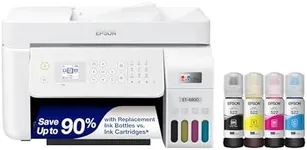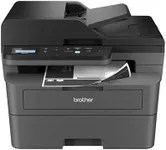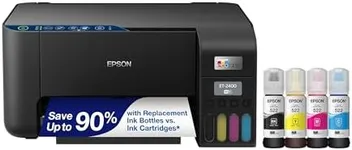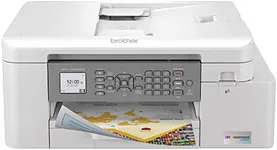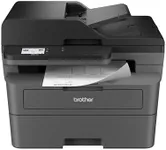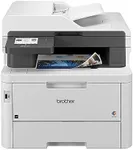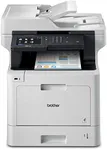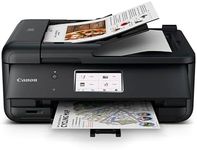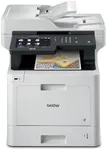Buying Guide for the Best All In One Printers
Choosing the right all-in-one printer can be a bit overwhelming given the variety of models and features available. An all-in-one printer is a versatile device that combines printing, scanning, copying, and sometimes faxing capabilities into a single machine. To find the best fit for your needs, it's important to understand the key specifications and how they align with your specific requirements. Here are the main specs to consider and how to navigate them.Print Quality (Resolution)Print quality is measured in dots per inch (DPI). Higher DPI means better print quality, which is important for producing sharp text and detailed images. For general home or office use, a resolution of 600 x 600 DPI is usually sufficient. If you need to print high-quality photos or detailed graphics, look for a printer with a higher DPI, such as 1200 x 1200 or more. Consider your primary use: for text documents, a lower DPI is fine, but for photos and graphics, opt for higher DPI.
Print SpeedPrint speed is measured in pages per minute (PPM). This spec indicates how quickly a printer can produce pages. If you print large volumes of documents regularly, a higher PPM (20-30 PPM) will save you time. For occasional printing, a lower PPM (10-20 PPM) is usually adequate. Think about your typical printing tasks: if you often print lengthy reports or multiple copies, prioritize a higher PPM.
Connectivity OptionsConnectivity options determine how you can connect your printer to your devices. Common options include USB, Wi-Fi, Ethernet, and Bluetooth. Wi-Fi and Ethernet are ideal for networked environments, allowing multiple devices to connect wirelessly. USB is straightforward for direct connections to a single computer. Bluetooth is useful for printing from mobile devices. Consider your setup: if you need to print from multiple devices or locations, prioritize Wi-Fi or Ethernet connectivity.
Paper HandlingPaper handling refers to the types and sizes of paper a printer can accommodate, as well as the capacity of its paper trays. If you print on various paper sizes or types (e.g., envelopes, labels, photo paper), ensure the printer supports them. A larger paper tray capacity (e.g., 250 sheets) is beneficial for high-volume printing, reducing the need for frequent refills. Assess your typical printing needs: if you print diverse media or in large quantities, look for versatile paper handling and larger capacity.
Scanner ResolutionScanner resolution, like print quality, is measured in DPI. Higher DPI means more detailed scans, which is important for digitizing photos or detailed documents. For general document scanning, 600 DPI is usually sufficient. For high-quality photo scans, look for 1200 DPI or higher. Consider what you will be scanning most often: for basic document archiving, a lower DPI is fine, but for preserving photo quality, opt for higher DPI.
Automatic Document Feeder (ADF)An Automatic Document Feeder (ADF) allows you to scan, copy, or fax multiple pages without manually feeding each one. This feature is particularly useful for handling multi-page documents efficiently. If you frequently work with large documents, an ADF can save significant time. Look for ADF capacity (e.g., 20-50 sheets) that matches your typical document size. If you rarely scan or copy multi-page documents, this feature may be less critical.
Duplex PrintingDuplex printing allows a printer to print on both sides of a page automatically. This feature is useful for saving paper and creating professional-looking documents. If you print a lot of double-sided documents, such as reports or booklets, duplex printing is a must-have. For occasional double-sided printing, manual duplex (where you flip the paper yourself) might be sufficient. Consider your printing habits: if double-sided printing is frequent, prioritize automatic duplex.
Ink/Toner Cost and YieldInk or toner cost and yield refer to the price of replacement cartridges and how many pages they can print. High-yield cartridges print more pages and can be more cost-effective in the long run. If you print frequently, look for printers with affordable, high-yield cartridges to reduce ongoing costs. For infrequent printing, standard yield cartridges may be sufficient. Evaluate your printing volume: high-volume users should focus on cost-effective, high-yield options.
